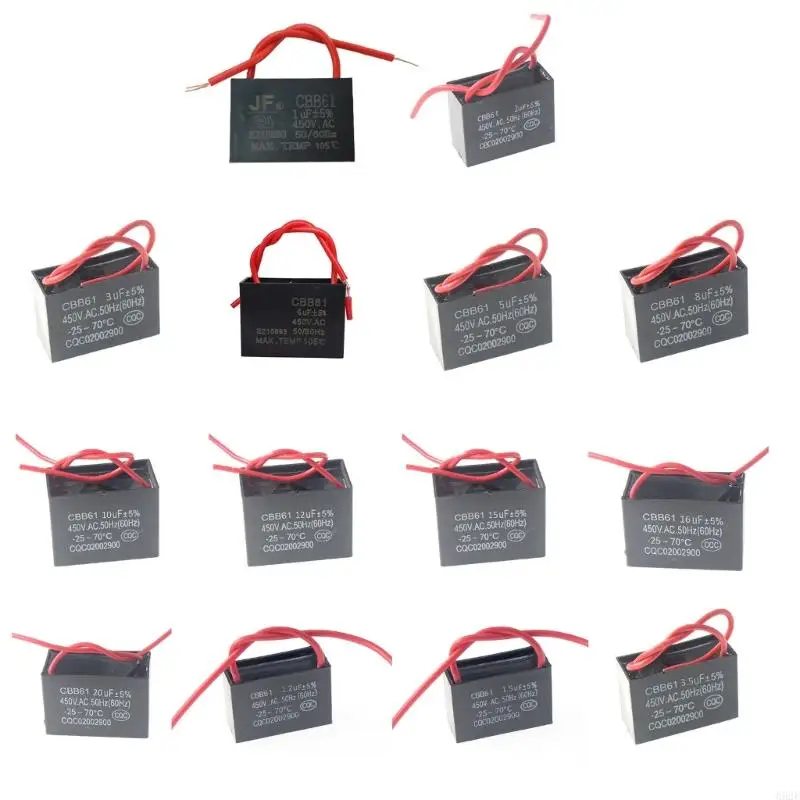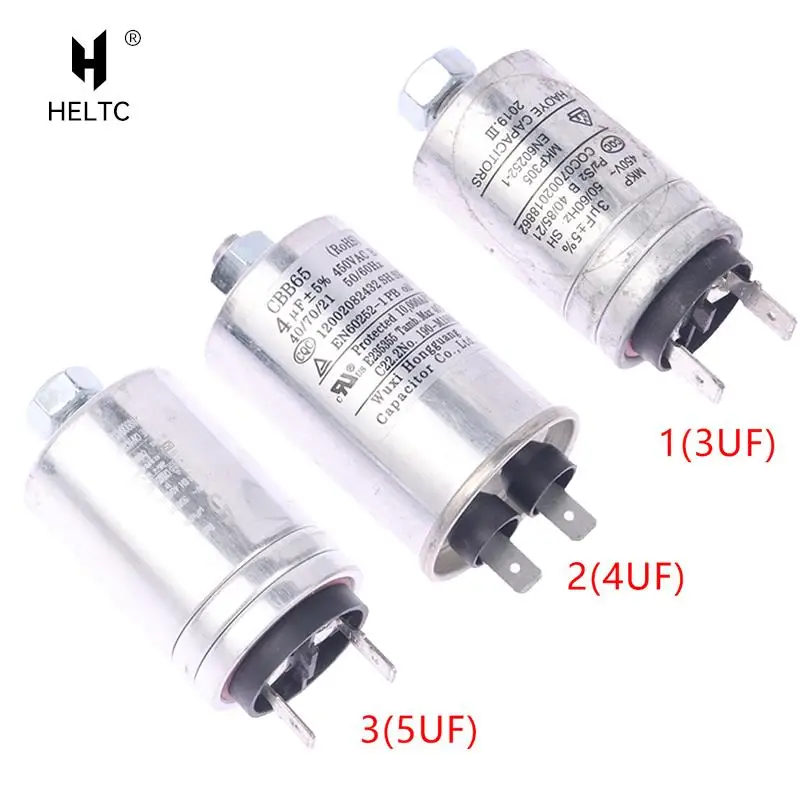Motor starting capacitor купить от 9,00 руб.







**Motor Starting Capacitor: The Essential Component for Your Electric Motor**
Introduction
As the owner of a small business or an engineer working on electrical projects, the motor starting capacitor is one of the most common components that you may encounter. This article will provide you with an in-depth understanding of this important device, its functions, and how to choose the right one for your needs.
What is a Motor Starting Capacitor?
A motor starting capacitor (MSC) is a passive component that is connected in parallel with the stator winding of an electric motor. Its main purpose is to provide the necessary starting current to the motor and help it overcome inertia when starting up. The MSC is designed to have a low internal resistance, which allows it to handle large currents without overheating.
Functions of a Motor Starting Capacitor
1. Providing Starting Current: The MSC helps to generate a large initial current that can overcome the inertia of the motor when it is first started. This current is generated by the difference in potential between the battery and the motor terminals.
2. Reducing Harmonic Distortion: The use of MSC can reduce harmonic distortion in the power line, which can improve the efficiency and reliability of the motor.
3. Balancing the Voltage: In some cases, the voltage between the two terminals of the motor can become unbalanced due to the inductance of the stator. The MSC helps maintain a constant voltage across the stator windings, which improves the efficiency of the motor operation.
Types of Motor Starting Capacitors
There are several types of MSCs available on the market, each with different characteristics and applications:
1. Value: Motor starting capacitors come in different values, such as 150μF, 220μF, or 330μF. The value of the capacitor determines how much current it can handle and how long it will last under normal operating conditions.
2. Voltage: MSCs can be rated for different voltages, such as 300V, 400V, or 500V. This allows you to choose the appropriate capacitor for your application, depending on the voltage requirements of your motor.
3. Type of Dielectric: There are two types of dielectric materials used in MSCs: electrolytic and ceramic. Electrolytic capacitors are commonly used in low-voltage applications, while ceramic capacitors are typically used in high-voltage applications.
Choosing the Right Motor Starting Capacitor for Your Needs
When choosing a motor starting capacitor, consider the following factors:
- Voltage Rating: Ensure that the voltage rating of the MSC is compatible with the voltage of your motor. If it's too low, it could fail quickly due to overheating. If it's too high, it could damage the motor or the other components in the circuit.
- Current Capacity: Choose a capacitor with a current capacity that is greater than or equal to the maximum current required by your motor during startup. This ensures that the capacitor can handle the load without failure.
- Dielectric Type: Depending on the application, you may want to consider using an electrolytic or ceramic capacitor. Electrolytic capacitors tend to have lower cost per unit capacity, but they also have a shorter lifespan compared to ceramic capacitors. Ceramic capacitors are generally more expensive but have a longer lifetime and higher capacitance density.
- Size and Mounting Options: Consider the size and mounting options of the MSC to ensure compatibility with your motor and other components.
Conclusion
Motor starting capacitors are essential components for any electrical motor application. They provide a starting current to overcome inertia, reduce harmonic distortion, and balance the voltage across the motor windings. Choosing the right MSC requires consideration of voltage rating, current capacity, dielectric type, size, and mounting options.
With proper selection and installation, motor starting capacitors can help extend the life of your electric motor and improve its performance. By understanding their functions and choosing the right capacitor for your needs, you can ensure that your motor runs smoothly and efficiently.
Introduction
As the owner of a small business or an engineer working on electrical projects, the motor starting capacitor is one of the most common components that you may encounter. This article will provide you with an in-depth understanding of this important device, its functions, and how to choose the right one for your needs.
What is a Motor Starting Capacitor?
A motor starting capacitor (MSC) is a passive component that is connected in parallel with the stator winding of an electric motor. Its main purpose is to provide the necessary starting current to the motor and help it overcome inertia when starting up. The MSC is designed to have a low internal resistance, which allows it to handle large currents without overheating.
Functions of a Motor Starting Capacitor
1. Providing Starting Current: The MSC helps to generate a large initial current that can overcome the inertia of the motor when it is first started. This current is generated by the difference in potential between the battery and the motor terminals.
2. Reducing Harmonic Distortion: The use of MSC can reduce harmonic distortion in the power line, which can improve the efficiency and reliability of the motor.
3. Balancing the Voltage: In some cases, the voltage between the two terminals of the motor can become unbalanced due to the inductance of the stator. The MSC helps maintain a constant voltage across the stator windings, which improves the efficiency of the motor operation.
Types of Motor Starting Capacitors
There are several types of MSCs available on the market, each with different characteristics and applications:
1. Value: Motor starting capacitors come in different values, such as 150μF, 220μF, or 330μF. The value of the capacitor determines how much current it can handle and how long it will last under normal operating conditions.
2. Voltage: MSCs can be rated for different voltages, such as 300V, 400V, or 500V. This allows you to choose the appropriate capacitor for your application, depending on the voltage requirements of your motor.
3. Type of Dielectric: There are two types of dielectric materials used in MSCs: electrolytic and ceramic. Electrolytic capacitors are commonly used in low-voltage applications, while ceramic capacitors are typically used in high-voltage applications.
Choosing the Right Motor Starting Capacitor for Your Needs
When choosing a motor starting capacitor, consider the following factors:
- Voltage Rating: Ensure that the voltage rating of the MSC is compatible with the voltage of your motor. If it's too low, it could fail quickly due to overheating. If it's too high, it could damage the motor or the other components in the circuit.
- Current Capacity: Choose a capacitor with a current capacity that is greater than or equal to the maximum current required by your motor during startup. This ensures that the capacitor can handle the load without failure.
- Dielectric Type: Depending on the application, you may want to consider using an electrolytic or ceramic capacitor. Electrolytic capacitors tend to have lower cost per unit capacity, but they also have a shorter lifespan compared to ceramic capacitors. Ceramic capacitors are generally more expensive but have a longer lifetime and higher capacitance density.
- Size and Mounting Options: Consider the size and mounting options of the MSC to ensure compatibility with your motor and other components.
Conclusion
Motor starting capacitors are essential components for any electrical motor application. They provide a starting current to overcome inertia, reduce harmonic distortion, and balance the voltage across the motor windings. Choosing the right MSC requires consideration of voltage rating, current capacity, dielectric type, size, and mounting options.
With proper selection and installation, motor starting capacitors can help extend the life of your electric motor and improve its performance. By understanding their functions and choosing the right capacitor for your needs, you can ensure that your motor runs smoothly and efficiently.
Каталог Motor starting capacitor (250 cd 60 150mf 350v cd60 216 269)
Цена: 804 Руб. 8.49$
Бесплатная доставка
Цены актуальны на 2025-04-28 20:15:22
Цена: 730 Руб. 7.45$
Бесплатная доставка
Цены актуальны на 2025-04-28 20:15:22
Цена: 7915 Руб. 95.77$
Бесплатная доставка
Цены актуальны на 2025-04-28 20:15:22
Цена: 658 Руб. 6.84$
Бесплатная доставка
Цены актуальны на 2025-04-28 20:15:22
Цена: 129 Руб. 1.25$
Бесплатная доставка
Цены актуальны на 2025-04-28 20:15:22
Цена: 110 Руб. 1.13$
Бесплатная доставка
Цены актуальны на 2025-04-28 20:15:22
Цена: 1511 Руб. 16$
Бесплатная доставка
Цены актуальны на 2025-04-28 20:15:22
Цена: 848 Руб. 8.63$
Бесплатная доставка
Цены актуальны на 2025-04-28 20:15:22
Цена: 1126 Руб. 11.47$
Бесплатная доставка
Цены актуальны на 2025-04-28 20:15:22
Цена: 1023 Руб. 10.4$
Бесплатная доставка
Цены актуальны на 2025-04-28 20:15:22
Цена: 50 Руб. 0.53$
Бесплатная доставка
Цены актуальны на 2025-04-28 20:15:22
Цена: 13 Руб. 0.15$
Бесплатная доставка
Цены актуальны на 2025-04-28 20:15:22
Цена: 10 Руб. 0.12$
Бесплатная доставка
Цены актуальны на 2025-04-28 20:15:22
Цена: 183 Руб. 2.09$
Бесплатная доставка
Цены актуальны на 2025-04-28 20:15:22
Цена: 920 Руб. 9.36$
Бесплатная доставка
Цены актуальны на 2025-04-28 20:15:22
Цена: 4890 Руб. 59.17$
Бесплатная доставка
Цены актуальны на 2025-04-28 20:15:22
Цена: 1304 Руб. 13.95$
Бесплатная доставка
Цены актуальны на 2025-04-28 20:15:22
Цены актуальны на 2025-04-28 20:15:22













